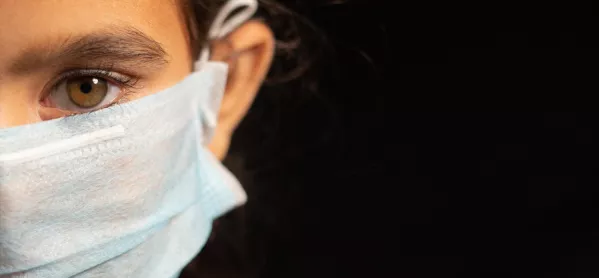Can we persuade students to wear their masks properly?

There is a concept in psychology known as the intention-behaviour gap, which explains why we’re often not very good at doing the things we say we’re going to do.
It’s why people fail in their diets, can’t quit smoking and don’t always remember to take a reusable bag to the supermarket. The road to hell is paved with good intentions.
Unfortunately, this concept may not be that useful when tackling one of the biggest issues facing schools right now: how to get the students to wear face masks. With students, the problem is that many of them don’t even have the intention of wearing masks in the first place.
It might be the sociologists rather than the psychologists that we need to turn to if we want to understand why it’s so hard to get students to comply with this simple rule. The study of deviant behaviour provides one explanation for why students won’t wear masks even when the costs to them are relatively low (yes, they’re a bit uncomfortable, but nowhere near as bad as the gas masks everyone had to wear during the war).
Coronavirus: Students find a way to buck the system
Resistance among chronically powerless groups has often been a key element of survival for the dispossessed. Political resistance has a noble history, from the Underground Railroad, helping slaves to escape from the Southern states of the USA, to the Edelweiss Pirates and White Rose anti-Nazi youth groups in 1930s Germany.
In schools, students have always found ways to buck the system. From the first day that students were forced into school uniforms, they’ve been coming up with ways to subvert them: the rolled-up skirt, the shortened tie, the non-regulation socks. It’s always been the aim of the subjugated masses to push the rules to their limits in order to exercise what limited power they have. Not wearing a mask in school is just another way to show that you won’t be pushed around.
Another explanation is that not wearing a mask becomes a symbol of unity with your peers. If rejecting authority is the negative side of the act, showing allegiance to your tribe is its positive manifestation.
Kids need to belong, and they need to show each other that they belong. This can be a complex area to navigate. I suspect there are all manner of nuanced variants of not wearing a mask that delineate student tribes, which are recognised by - and only by - those in the know: the mask worn under the chin, the mask hanging from one ear, the flat-out refusal to wear one at all.
Pulling mask delinquents into line
What then can be done to pull the mask delinquents into line? First of all, they need to be informed and regularly reminded of the reasons behind the rule - we’re in the business of education after all. The clearer the students are about the impact of not wearing a mask, the more likely they are to comply.
But that isn’t going to get through to everyone. Another way is to make it harder not to wear a mask than to wear one. I know of one school that’s managed almost total mask adoption by posting teachers in all the corridors at all breaks and lesson changeovers, politely reminding students of the rule and not letting them past until they’ve complied. It carries a heavy time-cost for the staff, but it was undoubtedly effective.
Staff can also play a role in helping to ingrain the practice into normal behaviour. It’s thought that we have to do a new thing many times over before it starts to become a habit. So if every lesson only ends once all students have put on their masks, it won’t be long before students are reaching for their masks before their teacher even says a word.
There are some more creative ideas that might work, too. Would it be possible to identify the student trendsetters - the kids who sit high up in the hierarchy of cool - and persuade them to wear masks so others would follow? This might simply mean having a push with the older students, in the hope their influence will trickle down to the younger ones.
Alternatively, you could introduce a mask lottery. It would work like the litter lottery some schools use to encourage students to put their rubbish in the bin. Each day, different members of staff are on mask-lottery duty, stationing themselves in a high-traffic area of the school. They hand out raffle tickets to every student who passes, only if they’re wearing a mask.
Tickets are entered into a weekly draw and all winners get prizes. The more times you get spotted in your mask, the more tickets you get and the greater your chance of winning. This idea stands or falls on the quality of prizes, so no pencil sharpeners or mouse mats: it has to be something the students really want, like getting to leave school early on a Friday.
A radical solution, perhaps, but in this case, it could quite literally save a life.
Callum Jacobs is a supply teacher in the UK
You need a Tes subscription to read this article
Subscribe now to read this article and get other subscriber-only content:
- Unlimited access to all Tes magazine content
- Exclusive subscriber-only stories
- Award-winning email newsletters
Already a subscriber? Log in
You need a subscription to read this article
Subscribe now to read this article and get other subscriber-only content, including:
- Unlimited access to all Tes magazine content
- Exclusive subscriber-only stories
- Award-winning email newsletters